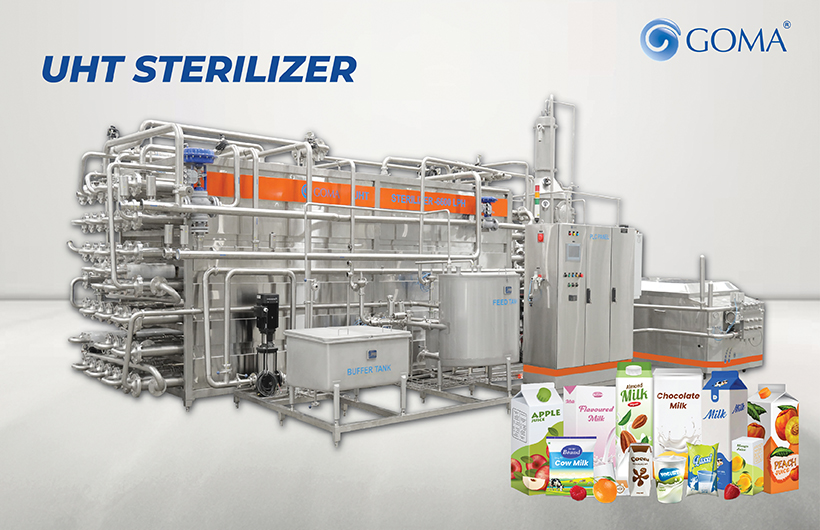07 August 2024
Benefits of UHT Treatment in the Food & Beverage Industry

In today's fast-paced world, ensuring food safety and extending shelf life without compromising quality are paramount concerns. This is where Ultra-High Temperature (UHT) processing plays a pivotal role. In this blog we are looking at ultra-high temperature (UHT) processing and how it ensures the safety and long life of our food and drinks. At Goma, we take pride in making advanced UHT plants that create top-quality products enjoyed worldwide.
Understanding UHT Processing
UHT processing involves heating liquid food or drinks to temperatures above 135°C (275°F) for a short time, usually 2-5 seconds. This quick heating kills harmful bacteria, yeasts, and Molds, keeping the product sterile when packaged. It stays fresh for longer while keeping its nutrients and flavor intact.
Step-by-Step Process
1. Preparation: Carefully choose and prepare raw materials to meet strict quality standards, ensuring exceptional final products.
2. Heating: The liquid undergoes rapid heating in our modern UHT plant with advanced technology for precise temperature control and sterilization.
3. Rapid Cooling: After heating, the liquid is quickly cooled to about 25-30°C (77-86°F) to preserve its taste and nutrients.
4. Aseptic Packaging: The cooled product is packed in sterilized containers like cartons or bottles, ensuring it stays fresh and safe for a long time without needing to be kept cold.
Quality Assurance
At Goma, quality is most important. We follow strict quality control measures throughout the UHT process, from checking raw materials to testing the final product. This ensures safety, consistency, and great taste in every batch.
Innovation
Driven by innovation, we always improve our UHT plant designs to boost efficiency & reduce use of energy.
UHT processing shows our promise to deliver safe, high-quality products internationally. At Goma, our Lab UHT plant represent innovation, precision, and unwavering excellence in food processing technology. Join us as we explore the future of food safety and preservation through UHT processing.

